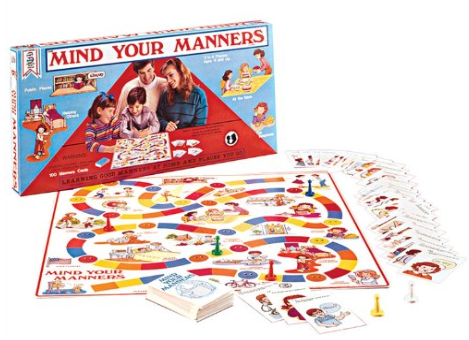 |
| Zimbbos - An animal-themed stacking game |
Zimbbos is a stacking game that challenges you to build "fantastic pyramids" with wooden blocks. The 15 blocks (elephants and jokers) are all the same height and roughly the same width. Each elephant has a number in the top left hand corner (1-10), but the jokers do not have a number. All pieces are brightly painted and solid. The stacking bars come in three different lengths (8", 6", 4"), and are the same width and depth.
Object: Be the player to place elephant number 10 on top of the pyramid without making it fall.
Set up:
Scatter the pieces in the playing area. Play on a solid, flat surface so the towers you create will not be tipsy because of an unstable base.
Play:
Players take turns. Throw the die and play depending on what comes up on the die.
- 1 circle - Place one elephant on the pyramid.
- 2 circles - Place two elephants on the pyramid.
- 3 circles - Place three elephants on the pyramid.
- Star - Place one balancing bar or one joker on the pyramid.
Try this:
- Make a tower by stacking just one of top of the other. How many can you stack before the tower tumbles?
- Line up the elephants by number across the table top and count as you go. Then line them up backwards and count backwards.
- Make a rule that all pieces have to be facing forward. Lay the pieces on the table sideways and backwards before the game starts. Pick them up and turn them in-hand to orient before placing.
- Make a variety of towers before therapy and take a picture of each with your phone. Show the individual a picture at a time and have him copy your towers.
- Call out one color, number, or animal at a time and have the individual line up or stack in that order.
- After building, take the tower apart, one piece at a time, without toppling it.
- Give directions for where to place each piece, such as on the left, top right, in between, etc.
- Work on visual discrimination, spatial relations, manual dexterity, graded grasp and release, reach, sequencing, counting 1-10, process skills, executive functioning skills, socialization skills, play and leisure exploration and participation
In the box: 10 wooden elephants, 5 wooden jokers (1 gorilla, 1 lion, 1 bear, 2 clowns), 3 wooden balancing bars, 1 wooden die
If you are interested in purchasing this item or just want more information, click on the image below.





